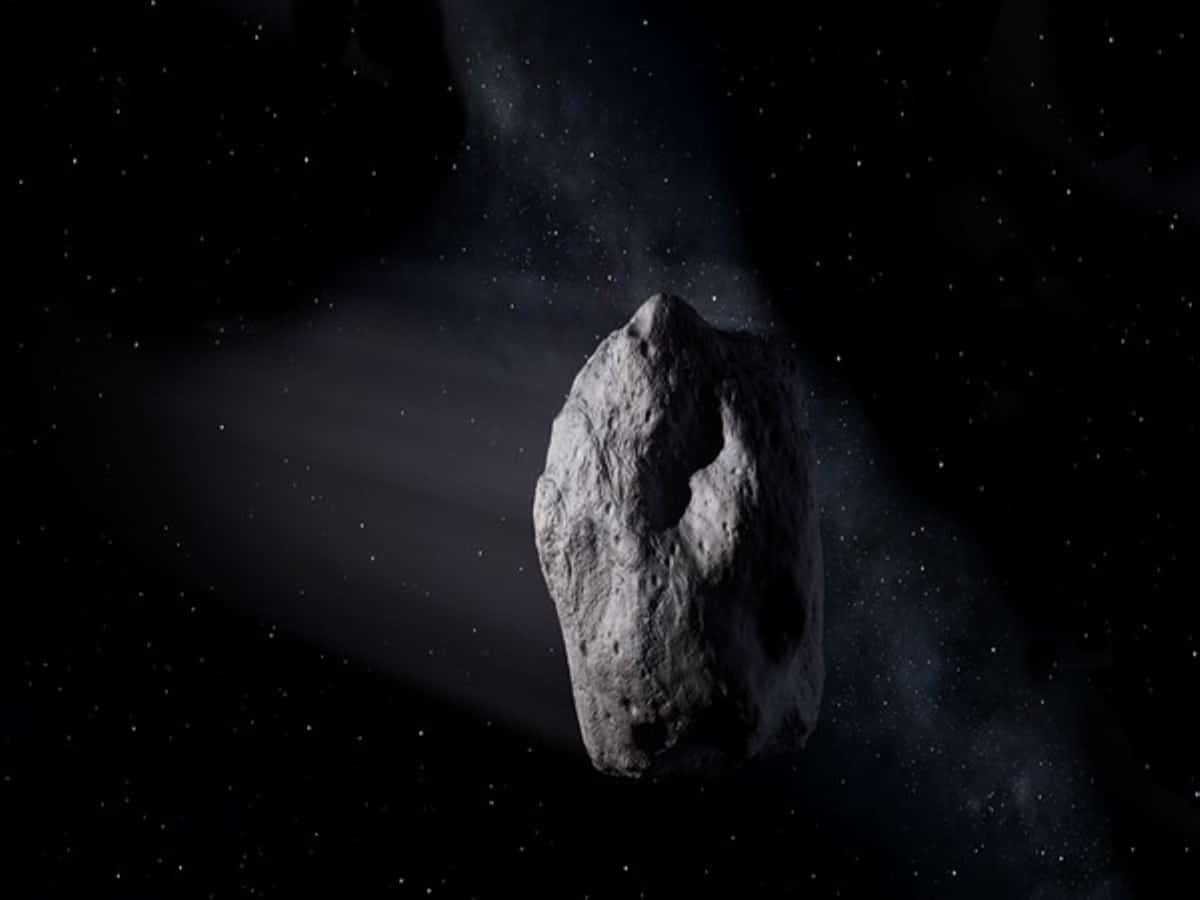

With the threat of asteroids always looming on mankind, the International Asteroid Day (June 30) gains importance for reminding us of asteroids and need for greater research on planetary defence.
Asteroids are debris left over during the formation of our solar system and the rocky bodies can be from a few feet to several miles in width.
While larger rocks are called asteroids smaller ones are called Meteorids. When earth’s gravity pulls them in they travel towards the earth in great speed and mostly burn out in the atmosphere due to friction and vaporize before touching the earth, known as shooting stars. Those that do not burn out are known as small meteorites.
It is presumed that a 10 kilometers asteroid that impacted the earth in Yucatan peninsula in Mexico some 65 million years ago led to the extinction of the dianosaurs on the earth.
In India Lonar Lake in Buldhana district, Maharashtra is supposed to be on a crater created by a meteorite collision impact on the basaltic rock formation in the Deccan plateau. One of the four known, impact craters in basaltic rocks anywhere on Earth.
The Lonar Lake has a diameter of 1.2 kilometres and is 450 feet below the crater rim. The meteorite impact is supposed to have occurred more than 50,000 years ago.
A 2019 study, conducted by IIT Bombay found that the minerals in the lake soil are very similar to the minerals found in moon rocks brought back during the Apollo Program.
The lake was declared a protected Ramsar site in November 2020.
On February 17, 1988, the first asteroid discovery was made in India by R. Rajamohan, Arvind Paranjpye and the team from the Indian Institute of Astrophysics after the independence.
The asteroid was named Ramanujan after the great mathematician Srinivasa Ramanujan. It was the 4130th asteroid discovered internationally.
Prior to that Norman Robert Pogson, an English astronomer who worked in India at the Madras observatory discovered the first asteroid from this soil on 16 August 1857. He named it Asia, it was the 67th international discovery.
International Asteroid Day, June 30 is the anniversary of the Tunguska impact over Siberia, Russian Federation, on 30 June 1908. The impact happened near Podkamennaya Tunguska river in remote Siberia wiping out 800 square miles of forested area. The seismic shockwaves were felt as far away as England. Dense clouds formed over the region at high altitudes and there was virtually daylight as night sky glowed in brightness. Hundreds of reindeers were killed and eighty million trees were flattened to the ground. The asteroid about 120 feet diameter wide 220 million pound asteroid speeding at over 33,000 miles per hour is supposed to have detonated in the sky heating the surrounding air to more than 44,500 degrees Fahrenheit.
According to astronomers, the asteroids orbit the Sun most of them are located in the main asteroid belt – a region between the orbits of Mars and Jupiter. Jupiter’s gravitational pull on the asteroids in the belt protects Mercury, Venus, Earth, and Mars from the impact of asteroids.
In December 2016 the United Nations General Assembly adopted resolution A/RES/71/90, declaring 30 June International Asteroid Day in order to observe each year at the international level the anniversary of the Tunguska impact over Siberia, Russian Federation to raise public awareness about the asteroid impact hazard. The theme of this year’s event is “small is beautiful,”.
The Tunguska asteroid event in Siberia, Russian Federation took place on 30 June 1908 and is considered to be the Earth’s largest asteroid impact in recorded history.
The impact happened near Podkamennaya Tunguska River in remote Siberia wiping out 800 square miles of forested area. The seismic shockwaves were felt as far away as England. Dense clouds formed over the region at high altitudes and there was virtually daylight as the night sky glowed in brightness. Hundreds of reindeers were killed and eighty million trees were flattened to the ground. The asteroid about 120 feet diameter wide 220 million pound asteroid speeding at over 33,000 miles per hour is supposed to have detonated in the sky heating the surrounding air to more than 44,500 degrees Fahrenheit.
The United Nations Office for Outer Space Affairs (UNOOSA) has worked on NEOs (Near Earth Objects) like asteroids, for many years, recognising a NEO impact hazard as a global issue demanding an international response.
The International Asteroid Warning Network (IAWN) uses well-defined communication plans and protocols to assist Governments in the analysis of possible consequences of an asteroid impact and to support the planning of mitigation responses.
The Space Mission Planning Advisory Group (SMPAG) is an inter-space agency forum that identifies technologies needed for near-Earth Object deflection, and aims to build consensus on recommendations for planetary defense measures.
According to Don Yeomans, manager of the Near-Earth Object Office at NASA’s Jet Propulsion Laboratory, on average, a Tunguska-sized asteroid will enter Earth’s atmosphere once every 300 years.
Asteroids that come close to Earth are called Near Earth Objects and close watch is kept on them.
Besides giving us significant clues regarding the origins of our solar system asteroids can tell us about the evolution of life on earth as there is a strong view among certain sections of scientists that material from asteroids hitting the earth may have had an important role to play in the evolution of life on planet earth.
Asteroids also have the potential to be used for mining ventures by future astronauts as different kinds of metals can be extracted from the asteroids.
Our interest in studying the material in the asteroids can be known from the fact that we sent a probe nearly 340 million kilometers away from Earth and after creating an explosive blast scooped out the material underneath.
This was executed by the Japanese Hayabusa2 probe on April 5, 2019, at the Ryugu asteroid which since has returned with samples.
Earlier NASA’s Deep Impact probe had created an artificial crater on a comet in 2005.
NASA’s Near Earth Object (NEO) Observations Programme is tasked to find, track and characterize at least 90 percent of NEOs that are 140 meters and larger in size.
An impact from asteroids of this size could pose a risk to Earth as they would cause large scale devastation. About 12,500 asteroids are presently known to be larger than 140 metres in size and could be devastating in their impact. An asteroid is considered to be Near Earth Object to be carefully observed if it in its oribital movemen it comes within 30 million miles of Earth’s orbit.
Besides telescopes, ground based Planetary radars also used bounce signals off NEOs approaching earth millions of miles away.
With most of these objects coming from space burning up in earth’s atmosphere leaves about 100 tons of dust particles .
It is the NASA,s Centre for Near Earth Objects Study in the USA which computes the orbit path of NEOs with high precision and provides long term analyses of possible impact on earth if any including impact time and location in the event of a predicted impact.
Interestingly one can predict impacts sometimes hundreds of years before it may actually happen. The data gathered by CNEOS is also made public.
The number of discovered near-Earth asteroids totalled more than 19,000, in 2019. An average of 30 new discoveries are added each week.
Nowadays we also have automated collision monitoring system that continually scans the most current asteroid catalog for possibilities of future impact with Earth over the next 100 years.
There are a few methods that NASA is studying to deflect an asteroid on a course to impact Earth.
One of these techniques is called a gravity tractor in which a spacecraft would close to the asteroid and use mutual gravity attraction between the satellite and the asteroid to change the orbital path of the asteroid by certain maneuvers.
Another method is using a kinetic impactor where a spacecraft rams into the asteroid at high speed of several kilometers per second to change the course of the asteroid or disintegrate it partially or completely. This method will be used on an asteroid system Didymos in 2022 which will pass around 11 million kilometers away from earth in Octorber 2022.
Thirdly nuclear explosive devices can also be effectively used to deflect asteroids particularly if there is hardly any warning time and there is a big asteroid going to impact earth.
Any asteroid larger than 1 kilometer can cause damage on a global scale. They can trigger earthquakes, and tsunamis and we have to be extremely careful.



